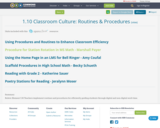
Rubric Element 1.10 Teachers implement routines and procedures for efficiently guiding students through digital and non-digital work time.
- Subject:
- Education
- Material Type:
- Primary Source
- Date Added:
- 07/20/2018

Rubric Element 1.10 Teachers implement routines and procedures for efficiently guiding students through digital and non-digital work time.
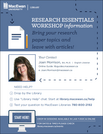
This workbook is used for library instruction for first year English courses. The model blends online tutorials, learning activies, and drop-in workshops. The learning objectives are detailed in the workbook.
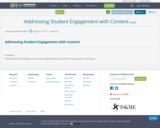
Rubric Element 1.5
Students are actively engaged with the content for the majority of the lesson.
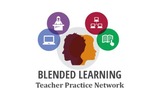
As diseases become stronger in nature, currently available antibiotics are no longer strong enough to suppress and cure said diseases. Therefore, what factors contribute to diseases becoming resistant to drugs and what public policies should be developed around them? In this problem-based learning module, students will work with partners or in groups to first assess the increasing problem of drug-resistant diseases and the toll they are taking on the American public. Additionally, students will work to investigate what hospitals and lawmakers are doing to address this problem. Once students understand and are familiar with the current state of affairs, they will then work to further understand and research exactly why this issue needs to be brought to the attention of the general public, in order to promote change to current hospital procedures and policies. Further, students will determine the current political climate and support (or lack thereof) for policy, and will analyze the interest in keeping, changing or removing said policies altogether. Once the group has a full understanding, students will then work to determine their position on the issues surrounding antibiotic resistant diseases and the policies associated with these diseases. As soon as the group reaches a consensus, students will work to research and determine a professional way in which to present their goals and objectives for curbing the issue of drug-resistant diseases.
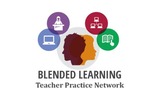
In this problem-based learning module, students will ‘dig’ for fossils in a digital environment, using the advanced graphing techniques of line-of-best-fit and piecewise functions to look for different kinds of trends in the health of the history of the earth. They will apply this information to their knowledge of the laws of superposition and index fossils to form a complete analysis in the historical health as well as to predict where we are going in the future.

In this problem-based learning module, students will be asked to brainstorm ideas and think innovatively both independently and collaboratively in addressing a real-world problem that is relevant to their daily lives and health. Are students aware of their calorie intake and how it affects their overall health? Students will investigate the calories consumed in a typical day and how much physical activity is needed to stay healthy and fit. Students/teams will be encouraged to use the internet for research purposes in their design phase. Students will utilize various online platforms to design an infographic that can be shared with relevant individuals in the community and others in the school building
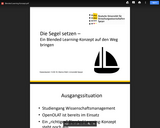
Die Präsentation entstant für einen Vortrag im Rahmen einer E-Learning-Veranstaltung. Aufgezeigt werden Möglichkeiten, Blended Learning-Elemente in ein bestehendes Studiengangskonzept zu integrieren.
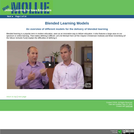
Blended Learning Models
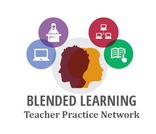
In this online learning module, you will: 1: Understand blended learning models2: Learn to design blended learning experiences
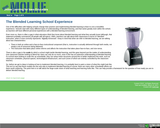
Blended Learning School Experience
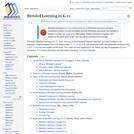
This book,"Blended Learning in K-12", is an overview of the concept of "blended learning" and how it relates to the integration of technologies in the K-12 environment. Dr. N.I. Scagnoli, the course instructor, has guided the students of the CTER 7 cohort in the creation of this book. This could not have happened in the 1980s. (By way of explanation to non-Americans, K-12 means all primary and secondary schooling).

Blended Learning in the Elementary Classroom
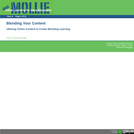
Blending Your Content
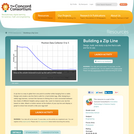
A zip line is a way to glide from one point to another while hanging from a cable. Design and create a zip line that is safe for a hard-boiled egg. After designing a safety egg harness, connect the harness to fishing line or wire connected between two chairs of different heights using a paper clip. Learn to improve your zip line based on data. Attach a motion sensor at the bottom of your zip line and display a graph to show how smooth a ride your egg had!
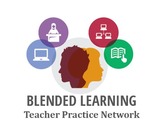
This problem-based learning module is designed to master the Ohio Learning standard of Science in Earth and Space Science number 2, Cycles and Patterns of Earth and the Moon. Thermal-energy transfers in the ocean and the atmosphere contribute to the formation of currents, which influence global climate patterns. Students will be exploring the various factors affecting the climate patterns we experience due to thermal energy. Students will work independently as well as with a partner. The final product is expected to be presented to their peers and teachers. This blended module includes teacher-led instruction, student-led stations, real world data analysis and technology integrated investigations.
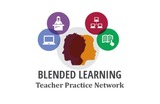
In this problem-based learning module, students will use their knowledge of the ancient Roman Empire and will work to analyze critical theories historians agree contributed to the fall of Rome. Students will then work to compare the problems faced by the Romans with problems citizens of the United States still largely face today. Through this investigation, students should recognize how modern technology, government agencies, laws and resources help to solve societal problems that could have once destroyed an empire. With this new understanding, students should work to present a solution to a major problem that plagued the Roman Empire during the years leading up to its collapse.

In this problem-based learning module, students will use their knowledge of the ancient Roman Empire and will work to analyze critical theories historians agree contributed to the fall of Rome. Students will then work to compare the problems faced by the Romans with problems citizens of the United States still largely face today. Through this investigation, students should recognize how modern technology, government agencies, laws and resources help to solve societal problems that could have once destroyed an empire. With this new understanding, students should work to present a solution to a major problem that plagued the Roman Empire during the years leading up to its collapse.Remix Resource uses key South Carolina standards for 6th Grade Social Studies and Language ArtsOriginal Resource uses key Ohio standards for 7th Grade Social Studies and Language ArtsAuthor: Blended Learning Teacher Practice Network Date Added: 07/23/2018License: Creative Commons Attribution-NonCommercial 4.0 Language: English Media Format: Audio, Downloadable docs, Graphics/Photos, Text/HTML
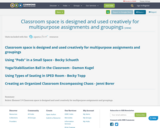
Rubric Element 1.9
Classroom space is designed and used creatively for multipurpose assignments and groupings.
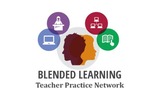
While studying the Articles of Confederation government and the Constitutional Convention in this problem-based learning module, the students will determine the benefits of peacefully changing an inept government. They will deduce the crucial steps needed for peaceful change to happen within a society. An area of research will be chosen to help solve a problem critical to the students’ middle school lives. Feedback will be gathered through a video interview or a Google Form survey of crucial stakeholders. Students will research the alternatives to improve upon their selected problem. Students will present their findings to a decision maker and wait to receive feedback.
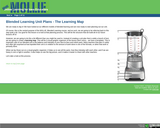
Creating a Blended Learning Unit Map